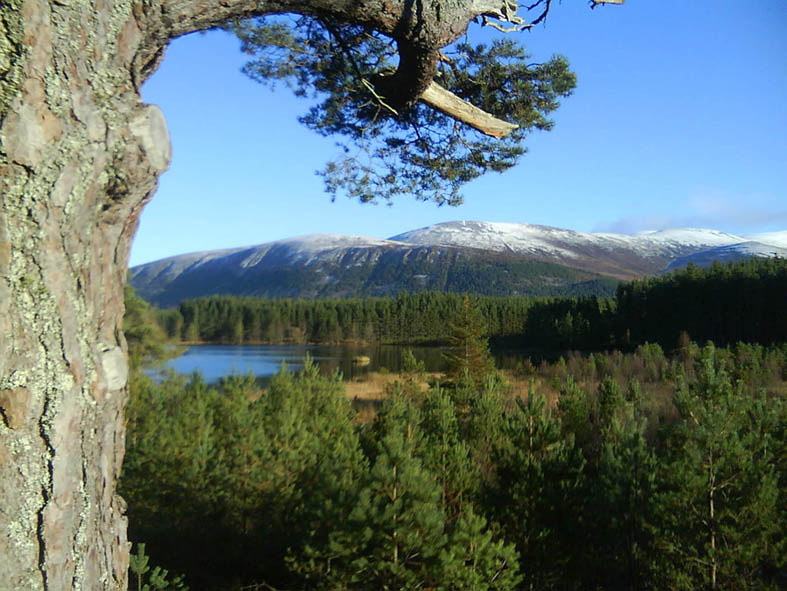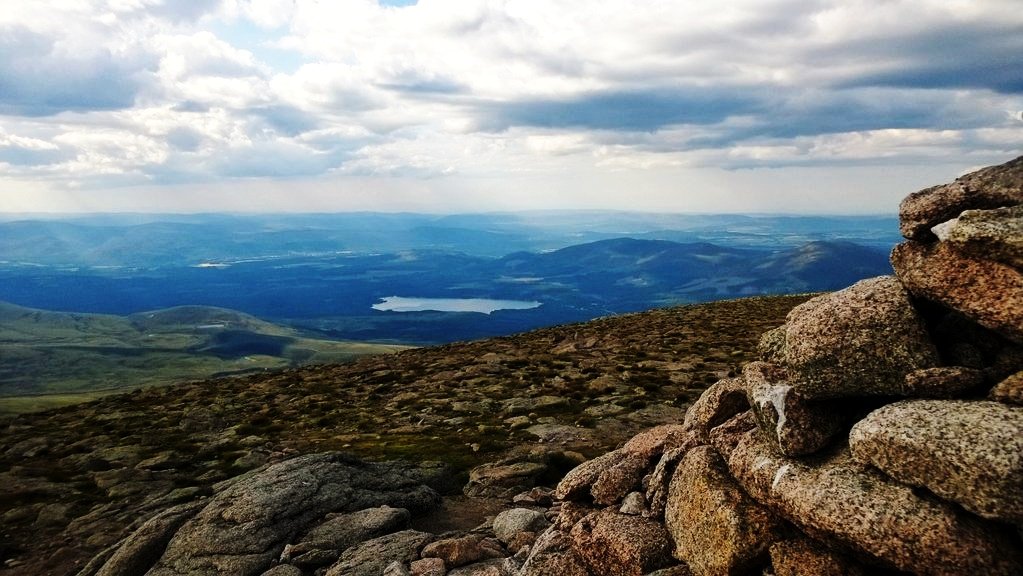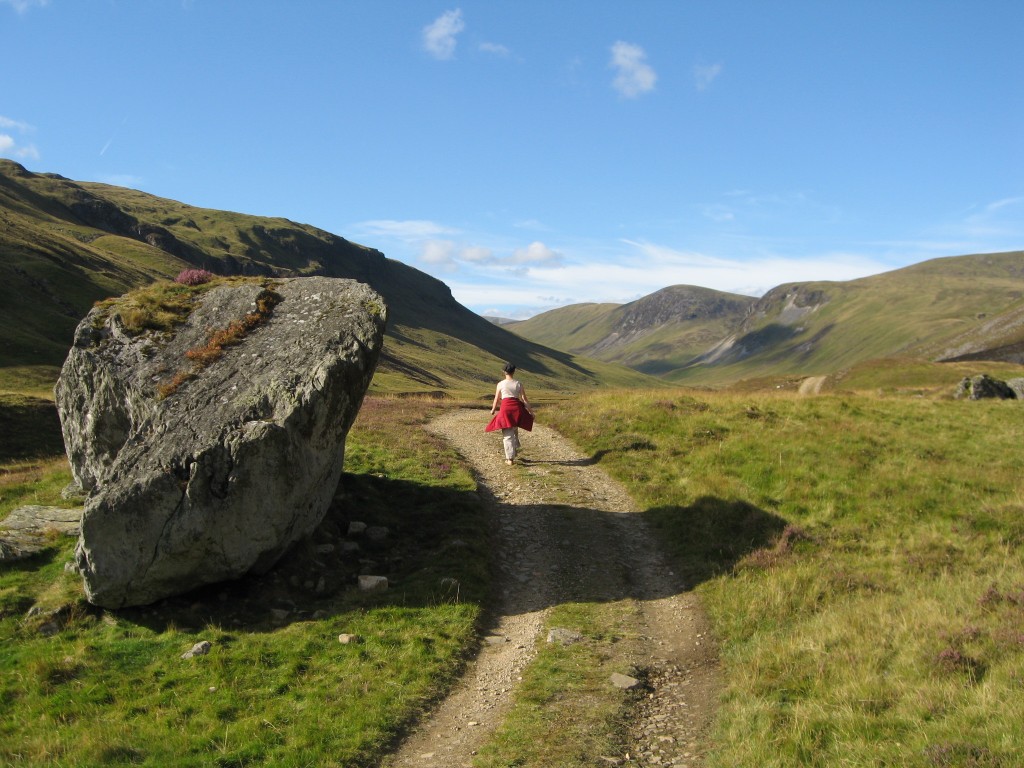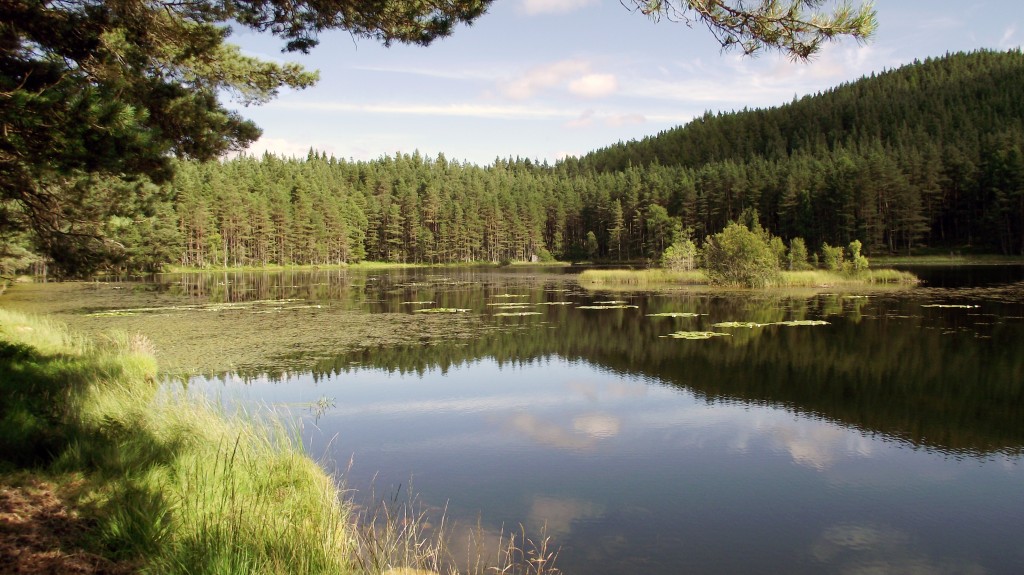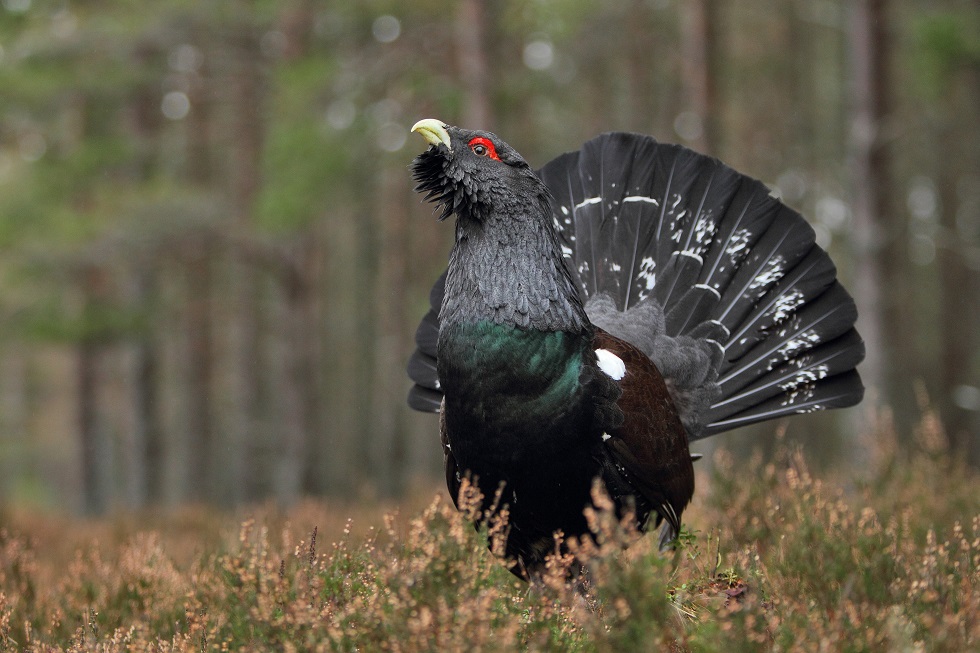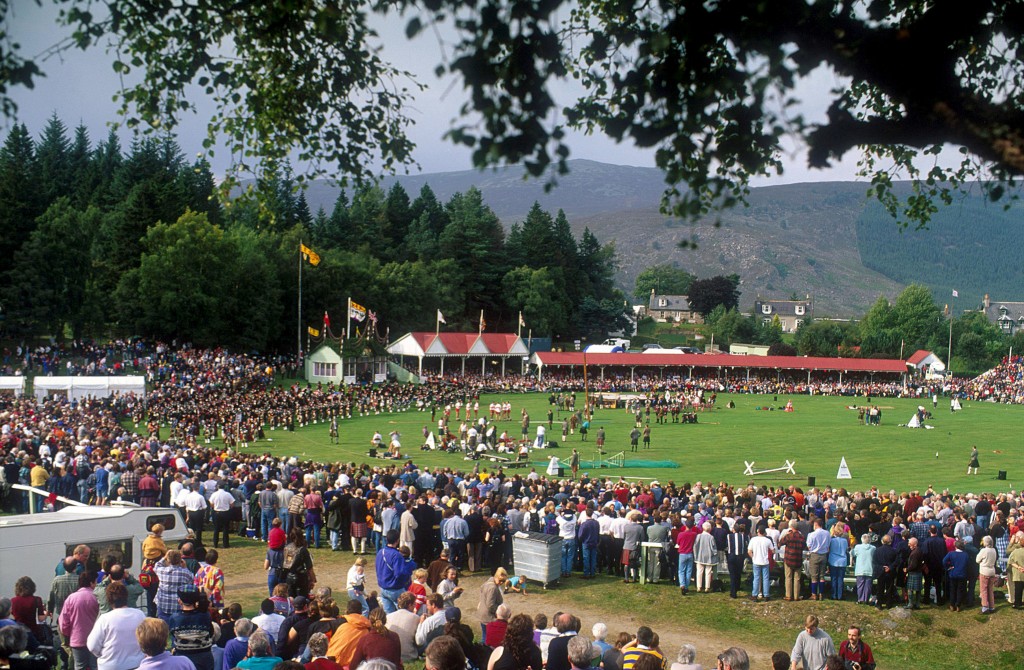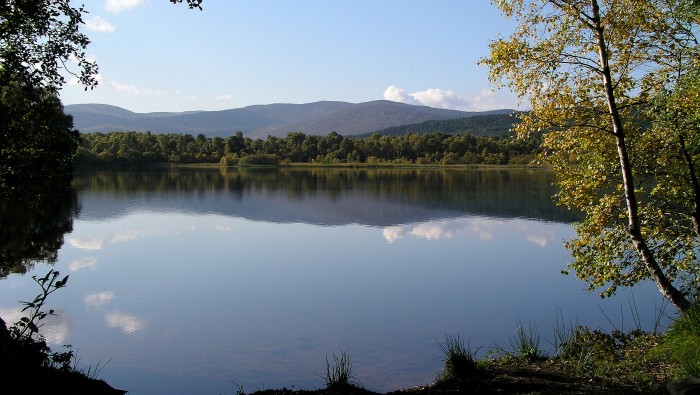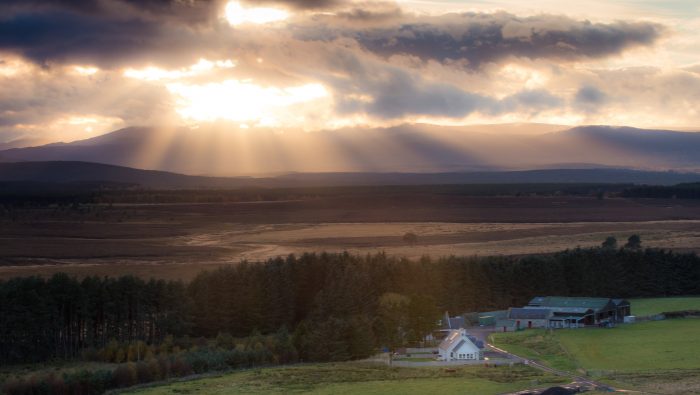Facts & Figures
The Cairngorms National Park is home to one-quarter of Scotland's native forest; one-third of the UK land above 600 meters; more breeding waders than the whole of Wales and a quarter of the rare and endangered species in the UK! Want to know more about the Cairngorms?
The Largest Park in the UK
The Cairngorms is part of an international family of National Parks and is the largest in the UK, at 4,528 sq km (1,748 sq miles).
It is twice the size of the Lake District National Park and bigger than the whole of Luxembourg tweet this fact!
The Cairngorms National Park is located in the Scottish Highlands, 127 miles north of Edinburgh and 140 miles north of Glasgow.
Inverness is the closest city, roughly 45 minutes away (30 miles) from the west side of the Park, and Aberdeen is only an hour away (42 miles) from the east side of the Park.
The Park covers parts of Aberdeenshire, Moray, Highland, Angus and Perth and Kinross.
Nearly half of the land in the National Park is considered ‘wild land’.
49 per cent of the park has been recognised as being of international importance for nature, and is protected by European Law.
There are 19 Areas of Conservation, 12 Special Protection Areas and 46 Sites of Special Scientific Interest within the Park.
The Cairngorms National Park is one of two National Parks established by the Scottish Parliament, the second being Loch Lomond and The Trossachs National Park.
Key Dates
- The Cairngorms National Park was established in September 2003.
- In March 2008 it was announced that the National Park would be extended to take in Blair Atholl and Spittal of Glenshee.
- In October 2010 the Park extended into Highland Perthshire and Glenshee.
The Highest Mountains in the UK
The Cairngorms is home to four of the five highest mountains in the UK;
- Ben Macdui 4,295 feet (1,309m)
- Braeriach 4,252 feet (1,296m)
- Cairn Toul 4,236 feet (1,291m)
- Sgor an Lochain 4,127 (1,258m)
The Cairn Gorm is 4,081 feet (1,244m) – the sixth highest mountain in the Uk.
The Cairngorm plateau is the highest and has the most extensive range of arctic mountain landscape in the British Isles tweet this fact!
There are 55 Munro’s (mountains above 914m in height) in the Park – and once you have climbed one you can officially call yourself a ‘Munro Bagger’.
Nature Reserves
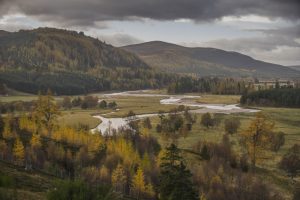
There are 9 National Nature Reserves across the Park, reserves help to protect an amazing range of wildlife and landscapes and provide a superb opportunity for people to get up close to, enjoy, and learn more about Scotland’s nature.
The Cairngorms National Nature Reserves are:
- Abernethy
- Corrie Fee
- Craigellachie
- Glen Tanar
- Glenmore
- Insh Marshes
- Invereshie and Inshriach
- Mar Lodge Estate
- Muir of Dinnet
Lochs
The Cairngorms National Park has some of the cleanest rivers and lochs in Europe.
Rivers in the Park, of which 70 per cent are considered to be in good ecological status, have nationally important populations of Atlantic salmon and three species of lampreys, as well as the globally endangered freshwater pearl mussel.
Loch is the Scottish Gaelic word for lake or fjord, while a Lochan is a small loch, there are around 60 lochs throughout the Park, and many lochans tweet this fact!
Lochs are freshwater lakes that can be found on the hills and mountains, within walking distance of popular tourist stops such as Aviemore, surrounded by Caledonian Pine Forests and connected by a network of rivers, burns and streams.
Rivers
There are 3 mighty rivers in the Park;
- The River Dee: known as the ‘Silver Dee’ and one of the larger Scottish salmon rivers, this 87 mile (140km) long tumbling, fast-flowing river of crystal clear water rises high in the Cairngorms and flows past Braemar, Invercauld, Balmoral and Ballater. With a snow reservoir in the Cairngorms to feed its source, it maintains a fair flow over the miles until close to Aberdeen near its mouth.
- The River Don: rising in the National Park and flowing 81 miles (131km) East down to the sea in Aberdeen, the Don is Scotland’s 6th largest river and is home to a diverse array of freshwater species including salmon, sea trout, brown trout, eels and lamprey.
- The River Spey: the second longest river in Scotland and the 8th in the UK, the River Spey is 109 miles (175 km) long. The river, rising from Loch Spey one thousand feet up on the Monadhliath Mountains in the Corrieyairack Forest, winds northwards before setting an easterly course, passing through Lochs Ericht, Garten, Insh and Morlich on the way to its mouth at the Spey Bay.
Woodlands
Some of the most important woodlands in Britain grow in the Cairngorms National Park. Native tree species comprise 79 per cent of the National Park’s woodlands, representing a quarter of the entire Scottish native woodland.
More than half the surviving Caledonian forest, including the largest remaining remnants, can be found in the Park tweet this fact!
More than one-third of the conifer plantations are on Ancient Woodland Sites, these plantations comprise nearly half the woodland in the Park.
Birches are the principle trees in most of the broadleaved woods in the Park, Birchwood’s are rich in insects, including the large Kentish glory moth.
Aspen trees, strikingly gold and yellow in early autumn, support several of the UK’s rarest and most threatened lichens.
The Park also holds Scotland’s largest extent of bog woodland, a European priority for conservation. These are excellent habitats for dragonflies, spiders, amphibians and mosses.
Wetlands
Large wetlands and their associated bogs and fens are havens for wintering wildfowl and for creatures such as rare water beetles to thrive.
Two of the major wetlands in the Park are globally-recognised RAMSAR sites. Insh Marshes is Britain’s largest naturally functioning floodplain over 5 miles (8km) long and nearly 2 miles (3km) wide in places. While, Muir of Dinnet is a large mosaic of heath woodland and mire, including peat bogs, swamps, fens and two lochs; Davan and Kinord.
Some of the UK’s best breeding populations of wading birds such as red shank, lapwing, curlew and snipe can be found in the Cairngorms wet grasslands.
Wildlife
The Cairngorms National Park covers less than two per cent of the UK’s landmass, however it is home to a remarkable 25 per cent of its threatened animal, insect, fungi and plant species, some of which can only be found in the Cairngorms tweet this fact!
With more high-level mountain ground than anywhere else in Britain and Ireland, the National Park offers a vital habitat for rare mountain plants and other scare wildlife.
It has the largest Caledonian forests and is home to many uncommon species like the Scottish crossbill.
The rare and endangered species who make their home in the Park include capercaillie, pine marten, osprey, Scottish wildcat, golden eagle, red squirrel, snow bunting, lapwing, crested tit, dotterel and black grouse.
People
The Cairngorms National Park is home to 18,000 people living in the numerous towns and villages in the Park, covering the areas of Aberdeenshire, Angus, Highland, Moray, Perth and Kinross.
The larger villages and towns in the park include: Ballater, Braemar, Corgarff, Crathie, Dinnet, Strathdon, Lumsden, Clova, Aviemore, Boat of Garten, Carr-Bridge, Dalwhinnie, Dulnain Bridge, Drumochter, Grantown on Spey, Kingussie, Laggan, Nethy Bridge, Newtonmore, Glenlivet, Tomintoul, Blair Atholl, Killiecrankie and Spittal of Glenshee.
Around 1.92 million people visit the Cairngorms National Park every year from all over the world.
More than half of the visitors come from Scotland, 25 per cent from elsewhere in the UK and 21 per cent are international visitors from around the world. View a summary of the 2019/20 Visitor Survey here.
Useful Infographics
Cairngorms Visitor Survey (Summary) 2019/20
